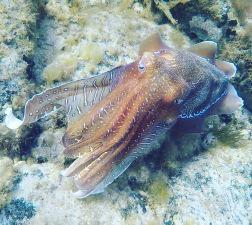
© CJA Bradshaw
While I’m in transit (yet a-bloody-gain) to Helsinki, I wanted to take this opportunity to reflect on one of the most inspiring eco-tourism experiences I recently had in South Australia.
If you are South Australian and have even the slightest interest in wildlife, you will have of course at least heard of the awe-inspiring mass breeding aggregation of giant cuttlefish (Sepia apama) that occur in May-July every year in upper Spencer Gulf near the small town of Whyalla. If you have been lucky enough to go there and see these amazing creatures themselves, then you know exactly what I’m talking about. And if you haven’t yet been there, take it from me that it is so very much worth it to attempt the voyage.
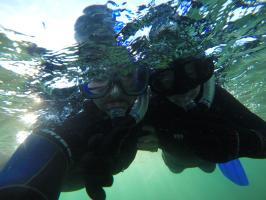
Father-daughter giant-cuttlefish-snorkelling selfie. © CJA Bradshaw
Despite having lived in South Australia for nearly a decade now, I only got my chance to see these wonderful creatures when a father at my daughter’s school organised a school trip. After driving for five hours from Adelaide to Whyalla, we hired our snorkelling gear and got into the water the very next morning.
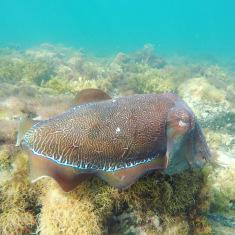
© CJA Bradshaw
Armed with a mate’s GoPro camera, I was able to do a little filming, but even these beautiful images don’t do the species justice (check out some videos and more images on my Instagram feed). The shifting colours and body forms of these rather large and gentle cephalopods (some males can exceed 1 meter in length) blew my noodle. I was also rather stunned just how close to shore they aggregate (only 10-15 metres out) and how shallow they come (sometimes less than 2 metres depth). In other words, even young children able to breathe through a snorkel can get up close and personal with the cuttlefish.
From a scientific perspective, these wonderful invertebrates are also rather unique, with recent genetic evidence suggesting that the aggregation at Point Lowly is made up of a separate species (compared to the ones found throughout the rest of South Australia). In other words, this is the only place in the world where this species aggregates to breed, and where you are nearly guaranteed to see them.
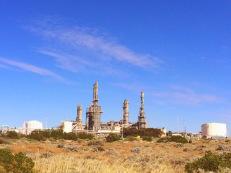
Point Lowly refinery (Santos)
From a conservation perspective, this places the species into a certain category of high extinction risk, although current modelling suggests that even the by-catch of individuals within the local prawn fishery is not currently enough to drive declines. Still, I was more than just a little gobsmacked just how vulnerable they seem, especially with a great bloody refinery and fuel storage and redistribution plant literally on the doorstep of the aggregation.
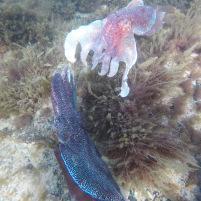
© CJA Bradshaw
It’s nearly unthinkable that such a precious biodiversity wonder is protected only in principal by a no-fishing policy in the aggregation site itself during the breeding season. One needs no permits (which in many ways is convenient, but it doesn’t fill me with a lot of confidence), and only one small accident at the plant could potentially wipe out the entire species. Even while we were snorkelling there were fishing boats and shore-based fishers scattered throughout the aggregation area.
In my opinion, these incredible creatures need a hell of a lot more protection than they currently have, and in an ideal world we would shift these precarious fuel plants away from the site. If more people realised how special this place is, we might collectively get more support to do just that. More international pressure could also help.

